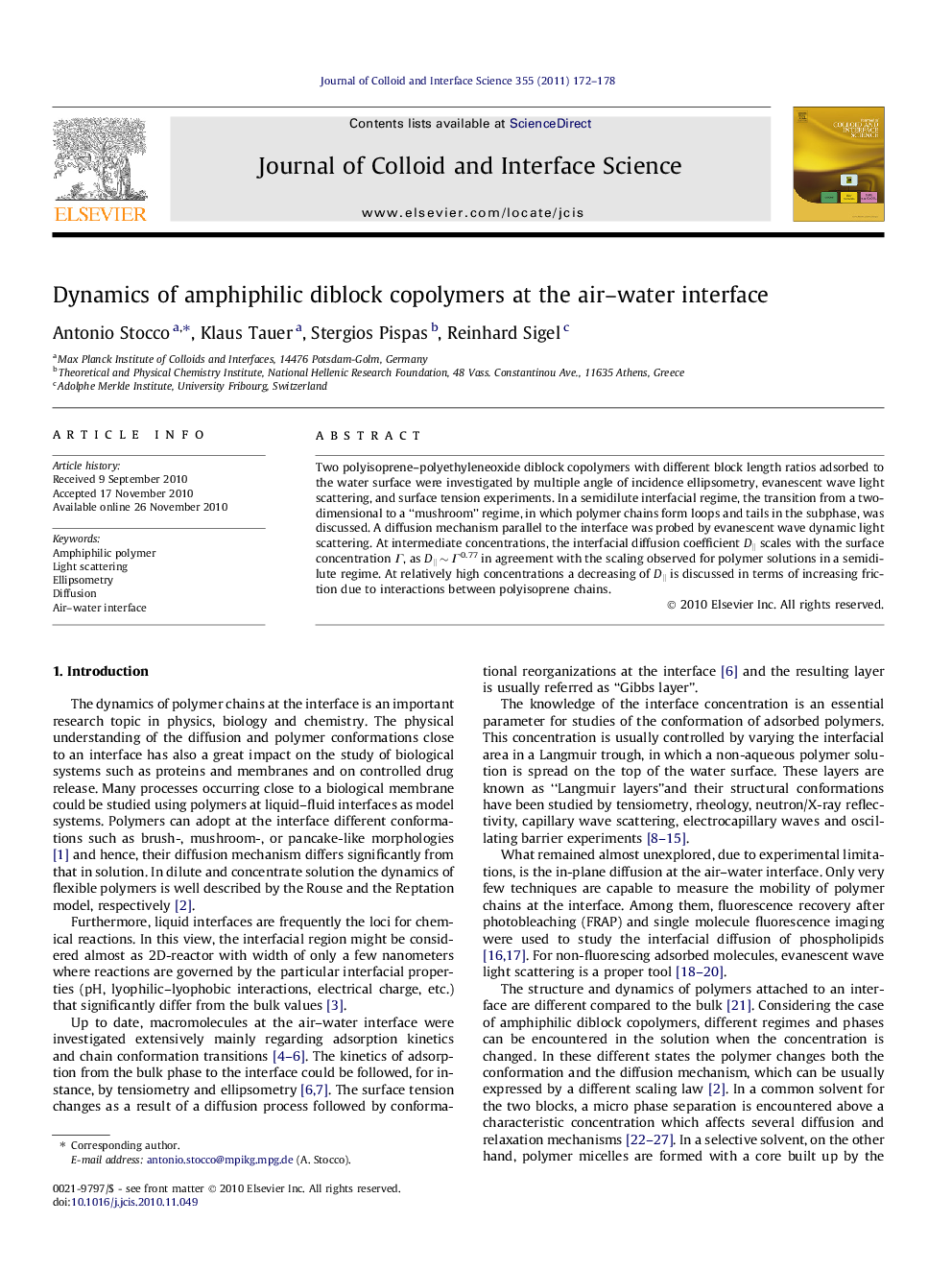| Article ID | Journal | Published Year | Pages | File Type |
|---|---|---|---|---|
| 608770 | Journal of Colloid and Interface Science | 2011 | 7 Pages |
Two polyisoprene–polyethyleneoxide diblock copolymers with different block length ratios adsorbed to the water surface were investigated by multiple angle of incidence ellipsometry, evanescent wave light scattering, and surface tension experiments. In a semidilute interfacial regime, the transition from a two-dimensional to a “mushroom” regime, in which polymer chains form loops and tails in the subphase, was discussed. A diffusion mechanism parallel to the interface was probed by evanescent wave dynamic light scattering. At intermediate concentrations, the interfacial diffusion coefficient D∥ scales with the surface concentration Γ, as D∥ ∼ Γ0.77 in agreement with the scaling observed for polymer solutions in a semidilute regime. At relatively high concentrations a decreasing of D∥ is discussed in terms of increasing friction due to interactions between polyisoprene chains.
Graphical abstractThe interfacial diffusion and the structure of two polyisoprene-polyethyleneoxide diblock copolymers at the water surface was studied in a semidilute interfacial regime.Figure optionsDownload full-size imageDownload high-quality image (117 K)Download as PowerPoint slideResearch highlights► Amphiphilic diblock copolymers adsorbed at the interface. ► In plane diffusion measurements by evanescent wave dynamic light scattering. ► Conformational changes in a semi dilute regimes.
